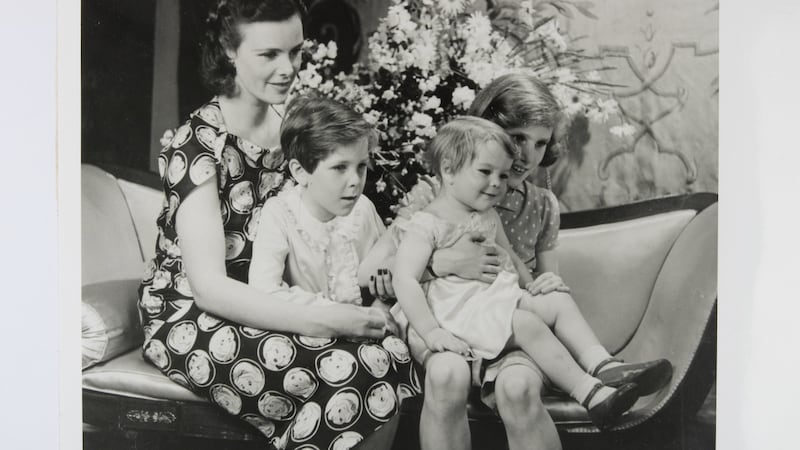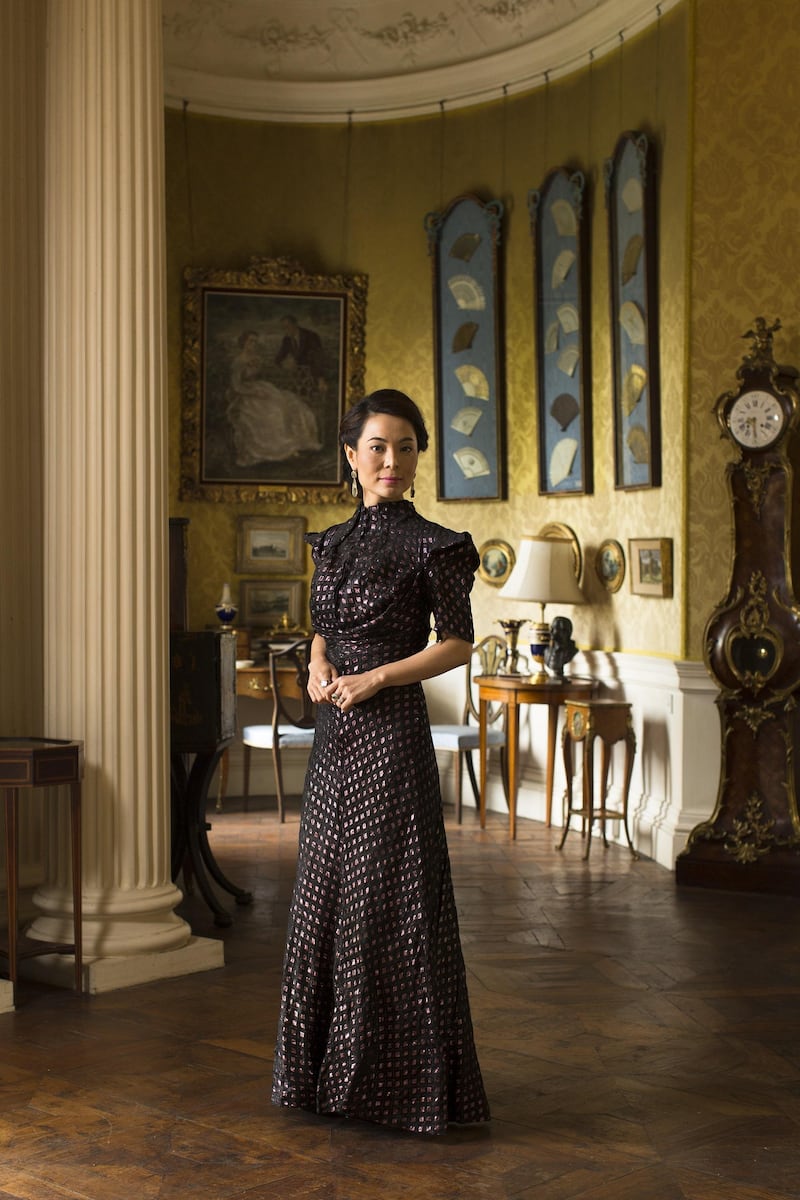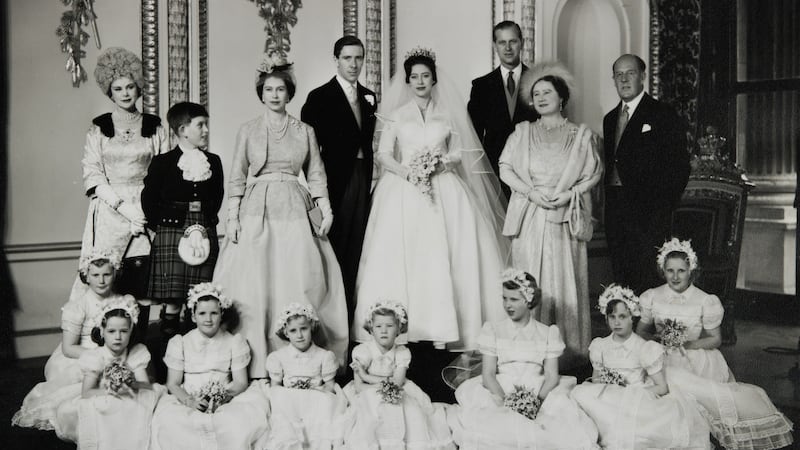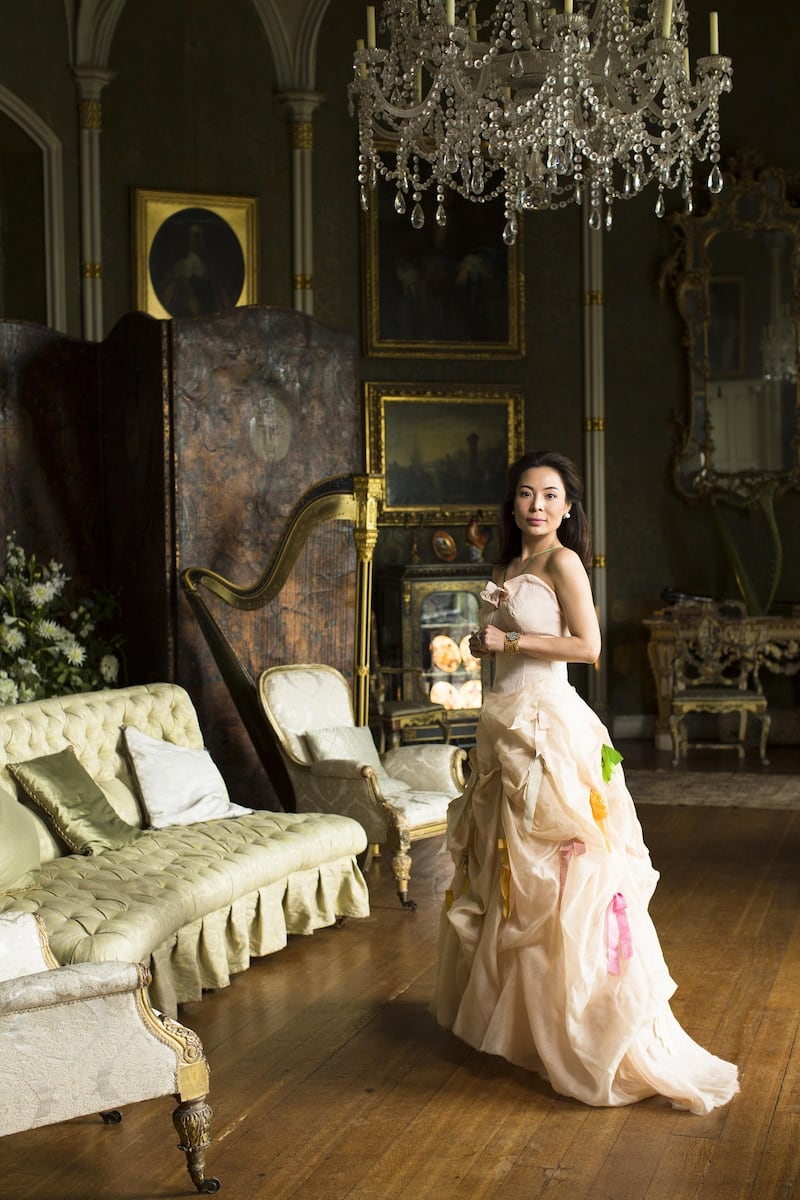"Had a wonderful time in this I am ashamed to say" goes a note written by Countess Anne Rosse of Birr Castle on a long green crepe dress by Victor Stiebel of Jacqmar when it was stored away for safekeeping. The late countess, born Anne Messel, was a celebrated society beauty and style icon – rather unfairly portrayed in The Crown as a social climber – who always carefully hoarded her dresses with little notes, keeping alive a long-standing family tradition going back six generations. Now going on display for the first time in Birr Castle are some of her most dramatic dresses, providing a valuable and rare opportunity to see these magnificent clothes and the life and social history they reflected.
An outstanding patron of fashion with a wide knowledge of her subject and a skilled needlewoman, Anne bought from some of the leading designers of the 20th century, like the renowned Anglo-American Charles James, Pucci, Molyneux and Schiaparelli as well as being an ambassador for Irish fashion, wearing couture from Sybil Connolly, Irene Gilbert, Ib Jorgensen and John Cavanagh. She preserved about 50 of the outfits she wore between 1935 and 1960.
"The fact that I have treasured these things is proof of what I thought of them," she wrote. According to Alison Lady Rosse, her mother-in-law would also buy dresses from British Home Stores near her home in London and transform them with different buttons and trimmings. "She made some of her own dresses and also whipped up a dress for her daughter's presentation at Buckingham Palace," she remembers.
Anne had innate style and was considered the best-dressed woman of her generation
Some of the items going on show include the dress and coat by Stiebel that Anne wore to her son Anthony Armstrong Jones's wedding to Princess Margaret (Stiebel was also responsible for Princess Margaret's yellow going-away outfit) and a number of creations of Charles James.
His famous black Taxi dress of 1931 (its spiralling zip enabled it to be put on – or taken off – in a taxi), the Snow White dress of 1938 made after Disney’s acclaimed movie debut and a black silk metallic evening gown called the Beetle, whose shimmer replicated scarab wings, were all lent to the Metropolitan Museum of Art in New York for the Charles James exhibition four years ago.
These dresses will be presented in the grandeur of the castle’s interiors during Heritage Week when the Parsons, who have lived in Birr since the 1620s, will open their home to the public for an extended range of summer tours from August 18th-26th.


Innate style
Anne had innate style and was considered the best-dressed woman of her generation. For the royal wedding, the coat in oyster-coloured silk brocade was considered at the time an unconventional colour for the mother of the groom. It had a black mink fur shawl collar for the occasion and when packed away, Anne’s handwritten note recorded that she could not afford to buy the collar but that the outfit “was acclaimed by the world as the smartest”.
James' clothes are the most significant in the collection. Considered the greatest talent of his generation by both Dior and Balenciaga and who dressed arch enemies Chanel and Schiaparelli, he is best known for opulent ballgowns and revolutionary tailored daywear. A master of cut, obsessed with perfection and gifted with an incredible colour sense, his gowns in the 1950s were the most expensive in the world – the average cost of a dress then was about $1,500, a hefty sum. Today, even a simple black wool blazer of his from circa 1940 has a price tag on lstdibs at just under €11,000. And in April 1996, a gown from 1945 with an estimated price of $6,000-$9,000 sold for a staggering $49,450 at auction in the US. Virginia Woolf described one of his dresses as "diabolical and geometrically perfect". He considered the Taxi dress one of his most important designs, both commercially and artistically.
Though the clients of James were some of the most prominent women in the world – Gypsy Rose Lee, Marlene Dietrich, Alicia Markova, Lady Ottoline Morrell and Millicent Rogers – Countess Rosse was his favourite and she recalled how when the bailiffs called to his workroom in London, his collection was thrown into taxis at six in the morning "for me to find piled up on the floor of my little dining room as I was preparing a luncheon party. Such was his generosity that he wanted to give me the lot in the end."

Irish designers
As for the Irish designers, Anne described Irene Gilbert as one of the greatest of Dublin's many mid-20th century geniuses and that she had been "one of the earliest to recognise the magic quality of her exquisite and original designs". A scarlet taffeta dress by Gilbert made to show off the Birr rubies is also one of the fascinating exhibits. "She looked after things so carefully and as time went on we realised what a wonderful legacy she left us," says Lady Alison.
The clothes on display are only a fraction of the sartorial treasures contained in Birr Castle, where hundreds of garments, including children’s clothes, are stored from centuries ago. It is an immensely valuable national archive and though the cost of conservation would be considerable, a permanent exhibition would be a powerful visitor draw.

Clothes contain the power to impress long after they are worn, making the lives of past generations accessible; fashion archives these days are now becoming highly prized, with many exhibitions breaking museum attendance records. The dresses at Birr and the stories behind them make this collection well worth a visit for the short time it is on display.
Tickets €18 include access to Birr Castle Gardens and Science Centre. For further information and booking, visit www.birrcastle.com or call 057-912 0336



















